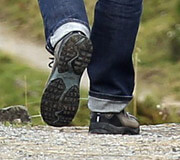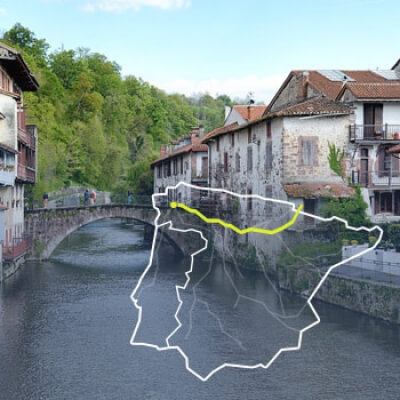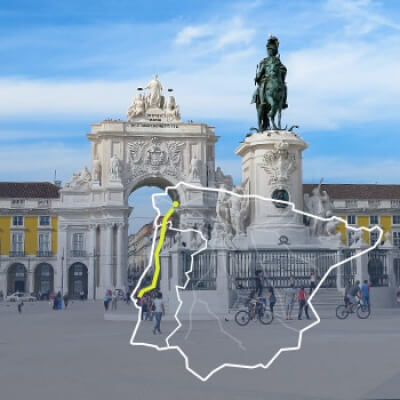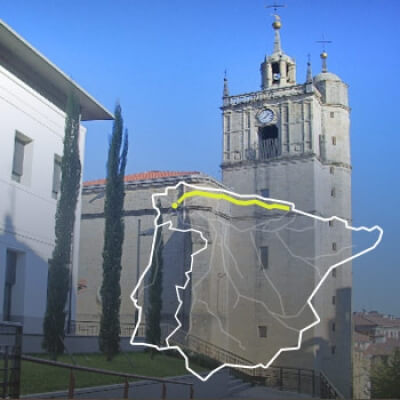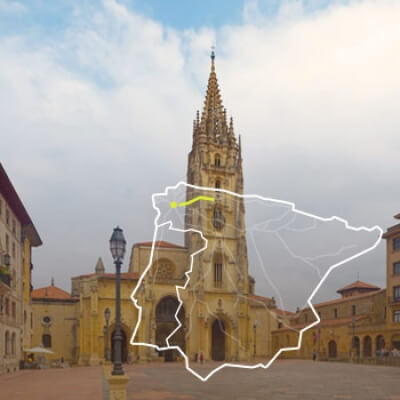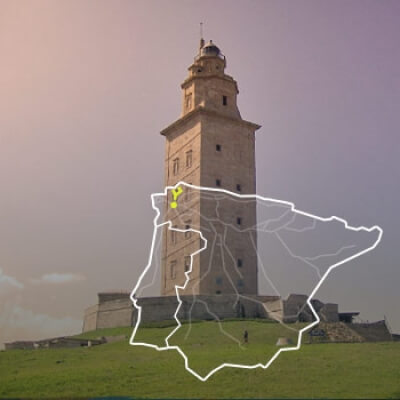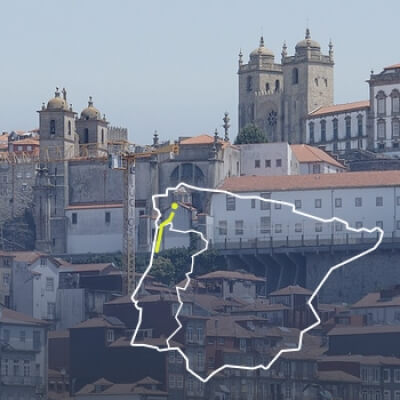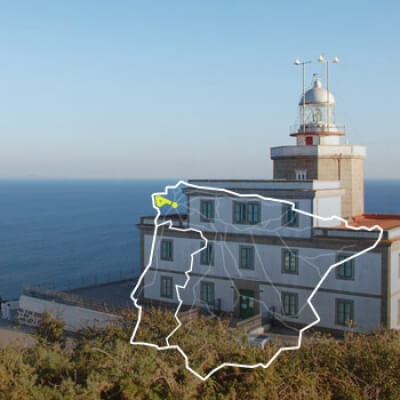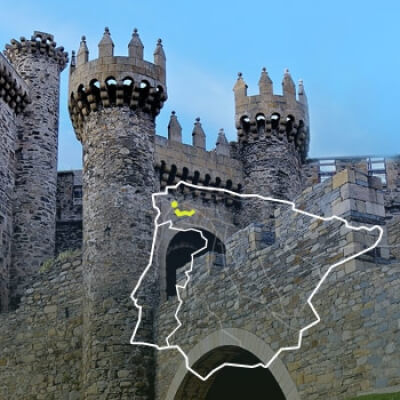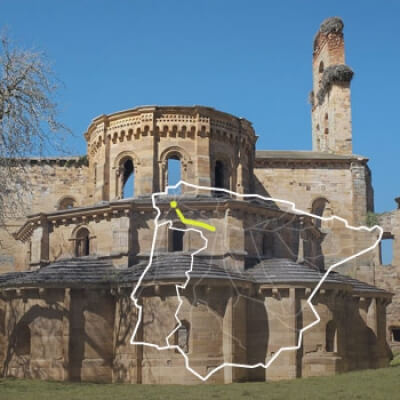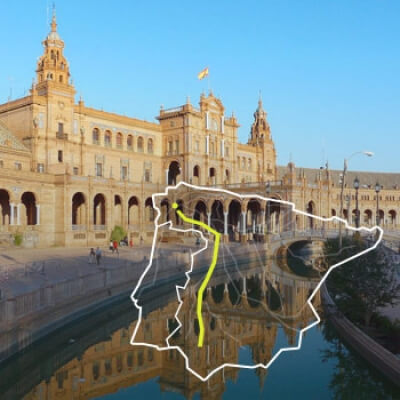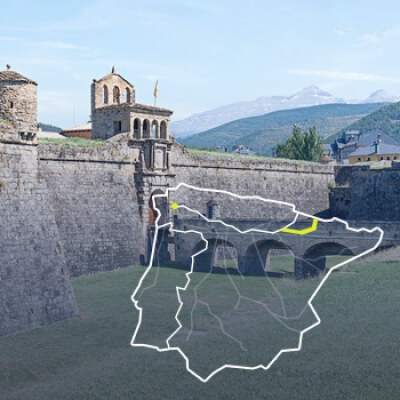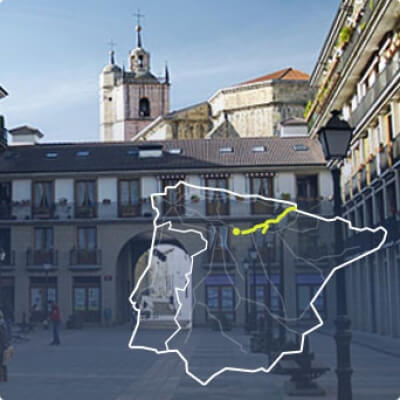Camino de Santiago Routes
Information, Stages, Map and Points of Interest

Plan your way
Make your way to measure with our new platform
Camino de Santiago Map: Routes & Stages
Discover all the routes of the el Camino de Santiago.
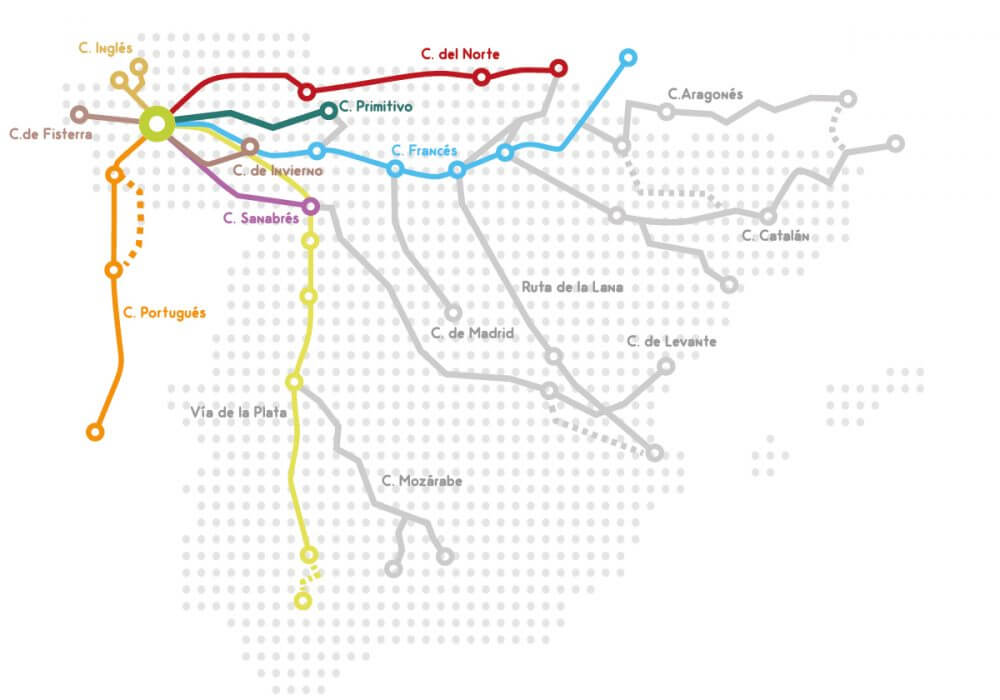
Some of the camino de santiago secondary routes are:
Lebaniego Way
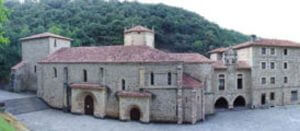
A route with a story of it’s own. Is a famous route because it guards in his monastery of Santo Toribio the Cruz de Cristo, a value that has given its own Jubilee Year…
The Salvador Way
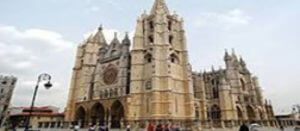
Also known as the Camino de San Salvador, it links León with Oviedo, traditionally the pilgrims used to divert to Oviedo to visit the Cathedral of San Salvador. Once in the city of Oviedo, they went along the Primitive Way until they connected again the French Way in Melide…
Inland Camino Vasco
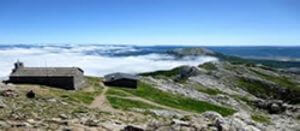
It has been a fundamental Jacobean axis in Roman times, since it was the entrance to the center of the Peninsula from Irun. The Way begins in Irún and in Santo Domingo de la Calzada (La Rioja) it joins the French Way… Read more
The Forgotten Path
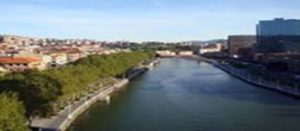
This Way is documented as one of the first routes in the history of the Jacobean routes and connects the cities of Bilbao and Villafranca del Bierzo, to later join the French Way or Winter Way, according to your choice, with a route of approximately 637 km in total…
Camino Portugués Along the Coast
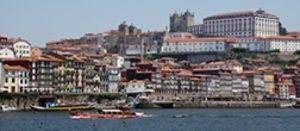
It starts in Oporto, goes to Redondela all along the coast (you enter Galicia by ferry in A Guarda, not in Tui, as in the traditional Portuguese Way) and, in addition, you pass through Vigo and you can see the Cíes Islands. In Redondela it joins the Portuguese Way to get to Santiago de Compostela… Read more
Camino de Bayonne
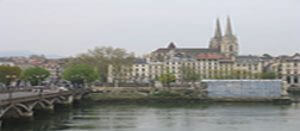
Also known as the Camino de Bayona, it starts in the French city of Bayonne and connects with the French Way in Burgos. From Irún this old road is also known as the Camino Vasco de Interior because much of the route coincides with… Read more
Camino Aragonés
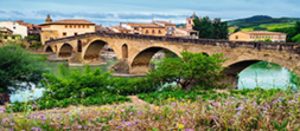
It joins the Hispano-French border, Somport, with the Navarrese town of Puente de la Reina, where it joins the French Way, an alternative route that allows you to enjoy to a greater extent the nature offered by the community of Aragon… Read more
Way of Le Puy
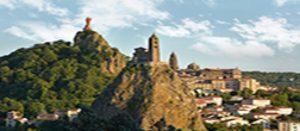
Also known as the Via Podiensis, part of Le Puy, in Velay, and runs to the port of Roncesvalles, point where it joins the French Way, one of the ways to avoid the great hill that continues after St. Jean Pied de Port…
Ruta de la Lana

It starts in Alicante and runs through La Mancha until it reaches the capital of Burgos, where it joins the French Way. This little-known route probably has its origins in the Neolithic, due to the importance of the territory in the wool trade…
Madrid Way
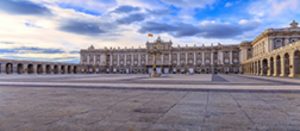
It starts in the capital of Spain and crosses the Sierra de Guadarrama, covering much of the northern meseta by Segovia, Valladolid and Leon to join in Sahagún to the French Way, few pilgrims recognize this route…
Camino Baztanés
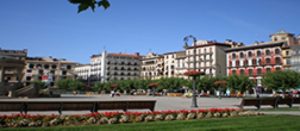
Starting in Bayonne, France, and crossing the Valley of Baztan to Pamplona, this route offers 109 km full of stories. This was a frequently used route in the Middle Ages, both by pilgrims and the army. This is why the Association of Friends of the Camino is working to rebuild…
Camino Catalán
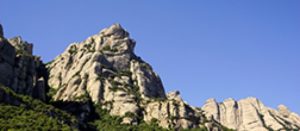
This route begins in Montserrat, but when arriving at Tárrega it deviates and this slope goes towards Santa Cilia de Jaca, where it connects with the Aragonese Way and then connects Puente la Reina with the French Way…
Camino Mozárabe
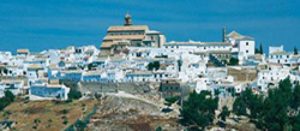
This way has three different starting points in Andalucia: Málaga, Almería and Jaen, the meeting point is the town of Baena and then continues to Merida point where it connects with the Vía de la Plata.
Ruta del Mar de Arousa
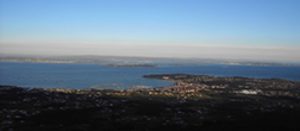
This maritime-fluvial route commemorates the arrival to Galicia by sea, just as the body of the Apostle Santiago did at the time. In Pontecesures you start walking along the Portuguese Way until you reach the Galician capital…
Camino del Sureste
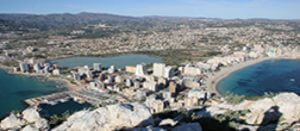
This slope begins in the city of Alicante and could almost be said to cross the peninsula to link in Benavente with the Via de la Plata, and then links in Astorga with the French Way.
Camino de Levante

It begins in Valencia, and crosses up to five communities before reaching Galicia in order to unite the two great seas of the peninsula. Once in Zamora, it joins the Ruta de la Plata (Silver Route)…
Camino Catalán through Zaragoza
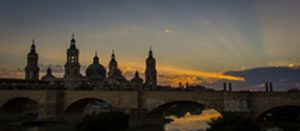
This Catalan route begins in Monserrat and passes through Zaragoza until it reaches Logroño, where it joins the French Way.
Camino de Cádiz
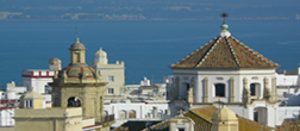
It begins in Cadiz and ends in Seville, since in this great city begins the Via de la Plata, also known as Via Augusta due to its connections with Roman culture…
Camino del Ebro
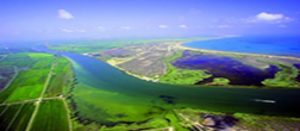
It begins in the town of Deltebre and continues until Fuentes de Ebro, point where it connects with the slope of the Catalan Way through Zaragoza…
International: Kumano Kodo
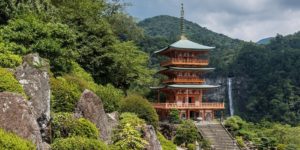
Japanese international route twinned with the Camino de Santiago. Discover one of the most important pilgrimage routes in the world: its history, stages, places of interest, how to get there…
Galicia: O Camiño dos faros

The “Way of the lighthouses” is a route of great importance within the Galician community that crosses the famous (Coast of death), places of great beauty and local essence.
Main Camino de Santiago routes
Camino Francés
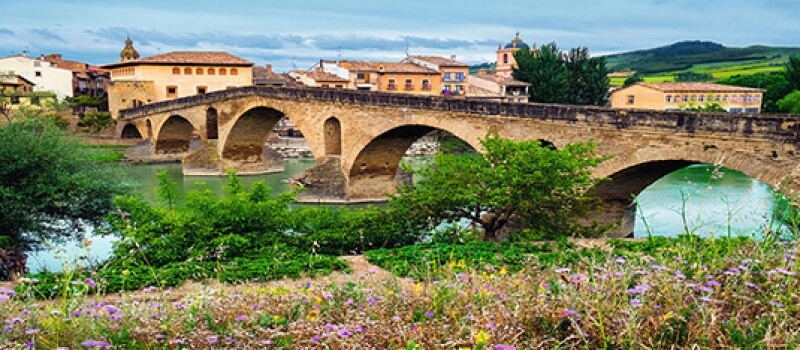
History of the Camino
There is information on this road since 1135, specifically in archives within the Codex Calixtinus, where you could find for the first time the distances separating the tomb of St. James from many of the main European cities. All this, added to the present time, make this route the most documented.
Due to the Christian culture, this route of the Way of Saint James became the route with the greatest number of pilgrims in Medieval Europe, to be able to appreciate the so longed for tomb in Santiago de Compostela. This provoked that every time it had more relevance within the pilgrims and the people had knowledge about it, reason why it was won the honor of being the route more recognized in the whole world, which brought with it a great economic and social recognition.
Today is the most traveled route as it is the most recognized worldwide, so it is also the best conditioned to be able to supply the large number of pilgrims who walk on it. It has a route close to the north of the peninsula of approximately 760 km divided into 31 stages and starting at Saint Jean Pied de Port…
Learn moreCamino Portugués
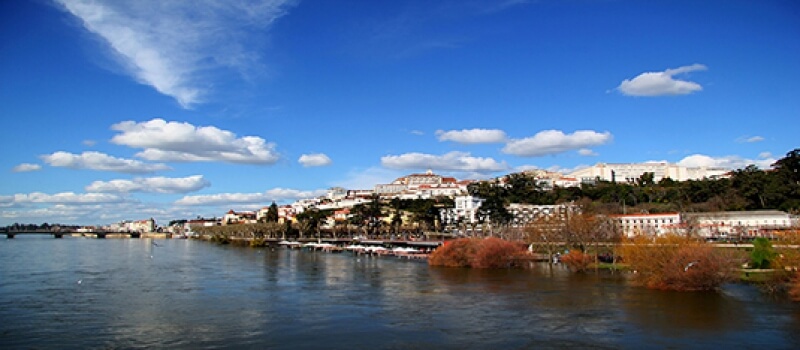
History of the Camino
This route of the Camino de Santiago experienced a growing change after the independence of Portugal, in the twelfth century, traveled by King Alfonso I. The journey from Portuguese lands to the capital of Compostela went beyond spiritual motives, due to independence, cultural and economic reasons increased relations between neighboring territories. This provoked the construction of a road network from Portuguese lands that lasted in time until now, creating a route with a lot of history between the neighbouring country and the Galician community.
Many kings, nobles and clerics helped, with their pilgrimages, to increase the relevance of the Jacobean route to become one of the most traveled routes today. One example is that of Doña Isabel de Portugal, who, after making a pilgrimage to the Cathedral of Santiago, offered the Apostle her crown as Empress of the Holy Roman Empire, back in the 14th century. Subsequently, after her death, her remains were buried in the Portuguese town of Coimbra with a pilgrim staff, as she had clarified previous death…
Learn moreCamino del Norte
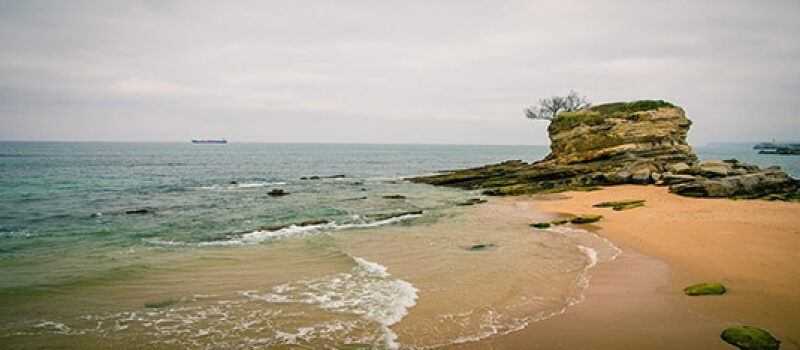
History of the Camino
The route runs through the whole of northern Spain, from the Basque Country to Santiago de Compostela, along the coasts of the Cantabrian Sea. It begins in Irún and on its way it passes through incredible cities such as San Sebastián, Bilbao, Santander or Gijón. Once on the Galician border, it enters the community through the town of Ribadeo, in the province of Lugo, just just 180 kilometres from the Cathedral of Santiago.
After the Primitive Way, it is considered one of the routes with the greatest history, the same as the French route. Many were the kings and queens of European countries who travelled along this route and finally contemplate the remains of the Apostle. After the reconquest of the Hispanic territory occupied by the Muslims, this northern route lost importance in favour of the French route, which also received greater support from the Spanish monarchy in the 12th century. However, many were the pilgrims who decided to continue their pilgrimages along the coast and the Basque and Cantabrian ports, being named for this also as the Coastal Way…
Learn moreCamino Primitivo

History of the Camino
As soon as the tomb of the Apostle Santiago was discovered in the year 813, Alfonso II, nicknamed the Chaste and king of Gallaecia at that time, set out on the road to Galician lands, leaving from Asturias with his mind set on the incredible discovery. He took the path that runs through the interior of the Asturian lands to reach Lugo, and from there continue the capital of Compostela, where on his arrival, he ordered the construction of a church where the remains of the Apostle were collected, thus laying the foundations of the now world-famous Cathedral and creating since then what would become the first of all the Ways to Santiago, the Primitive.
It is a wonderful option to discover the true roots of the pilgrimage, starting from Oviedo and crossing the Asturian Principality by the west to access Galicia by the province of Lugo, until it connects with the route of the French Way in the municipality of Melide, just 55 km from Santiago de Compostela. The route has an imposing splendour of scenery, as well as countless historical and heritage resources…
Learn moreCamino Inglés
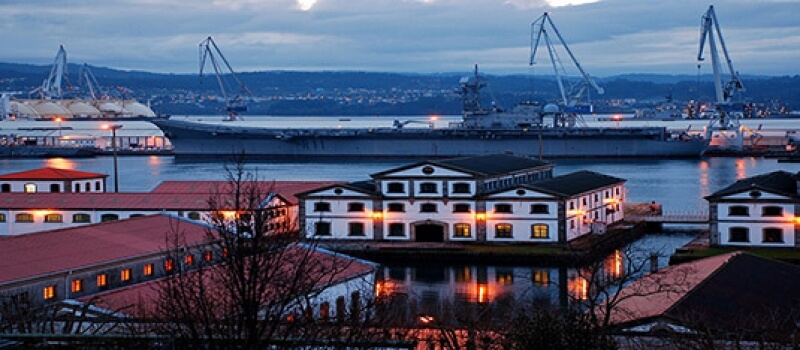
History of the Camino
Due to the location of the ports of entry of the cities of Ferrol and A Coruña, this Galician route was born. It was not only English sailors who transited the Galician coasts; Scots, Irish and many others from the Scandinavian countries and the Netherlands arrived at the port to later use land routes and trails laid out for marketing purposes. Pilgrimages began to gain fame among sailors in the fourteenth century, when they wished to know Christian sanctuaries beyond those existing in their territories.
120 km separate the cities of Ferrol and Santiago de Compostela. Full of history and heritage, where the green predominates in each stage and the tranquility accompanies us in a way away from the massification existing in other routes. There are two slopes: From Ferrol or from A Coruña, being 5 stages the ones that form the first slope and only 3 the ones that separate A Coruña from Santiago…
Learn moreVía de la Plata

History of the Camino
This Way arose in Roman times. Previously, it was a road used by the ancient empire in its tracing through Hispania, used from the town of Merida (Augusta Emérita) to Astorga (Artúrica Augusta). It was a main communication axis of the west of the peninsula, which made this Silver Route the chosen route to climb from the south to the capital Compostela.
After the reconquest of the southern territories against the Muslim army, the route was artificially increased towards the south of the peninsula. In the tenth century, Almanzor made a looting in which he took the bells of the Cathedral of Santiago to the south, also Christian prisoners in their transport to Cordoba, which made this route the first massive influx of this route. Some time later, after the re-Christianisation of the peninsular territories, the bells were returned to their origin through the Via de la Plata, laying the foundations for furious pilgrimages from the Andalusian and Extremadura communities to the Galician community…
Learn moreCamino Sanabrés
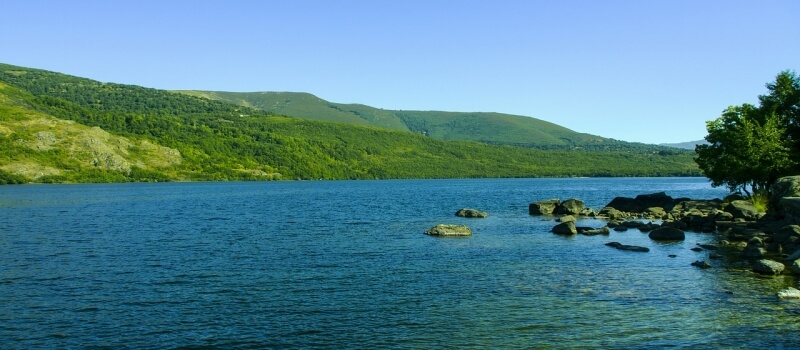
History of the Camino
This Way is made up of numerous paths built by the Romans and travelled by many peoples, from the Celts, Phoenicians, Romans, Arabs and, finally, the Christian pilgrims on their way to Santiago de Compostela. This route has always gone hand in hand with the Ruta de la Plata, a route that links the lands of the south with those of the capital of Compostela, and thus avoid passing through Astorga once they reach Zamora. In this way, Galicia can be reached through the province of Ourense.
Specifically, this Way starts from the Zamorano town of Granja de la Moreruela, where the first monastery of the Cistercian Order was built. This place was known as Santiago de Moreruela, proof of the link with the Way of Saint James. Travellers and traders also used this route to take advantage of the roads that communicated points as far away as the peninsular centre and the north.
They were also used as royal canyons and routes for merchants from all over the country, highlighting the well-known “veredas”, routes chosen by Galician farmers to descend to Castile at the time of the harvest. A multitude of hospitals and inns were built, as well as temples and monasteries to supply all the pilgrims who…
Learn moreCamino de Finisterre / Muxía
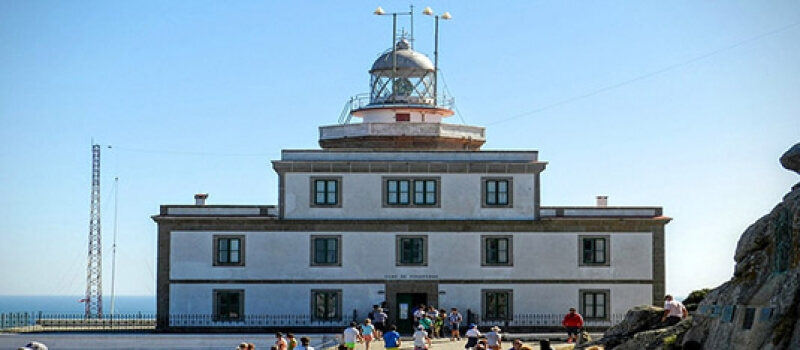
History of the Camino
Fisterra, from the Latin finis terrae, contains history of long before the beginning of pilgrimages. In this place, is where some scholars locate the ancient city of Dugium with the so famous Atlantis and where settled the Celtic tribe of the nerios, coming from the south peninsular. The choice of this area was not accidental, as it was believed that Cape Finisterre was the last land in the world that they knew. Thus they began to build numerous settlements and buildings to venerate the sun god, who every day reappeared between the waters of the Atlantic Ocean.
There came to exist an important altar and spiritual center in honor of the sun king, the Ara Solis, a temple to which both Celts and later the Romans attended. According to legends, it was the Apostle himself who ordered the destruction of this temple, considering it a pagan cult. A great flood finally knocked down the Ara Solis, before the refusal of the people, and razed the entire village, saving only two oxen that managed to flee the place. Although their fate would be short-lived, since later they would be transformed into stone, as a divine punishment, creating the current islands of Bois de Gures.
As you can see, the only layout that departs from Santiago is not a modern invention as many may think. Recent excavations in the hermitage of San Guillermo have demonstrated their close link with the Apostle and with other much older traditions and cults…
Learn moreCamino de Invierno
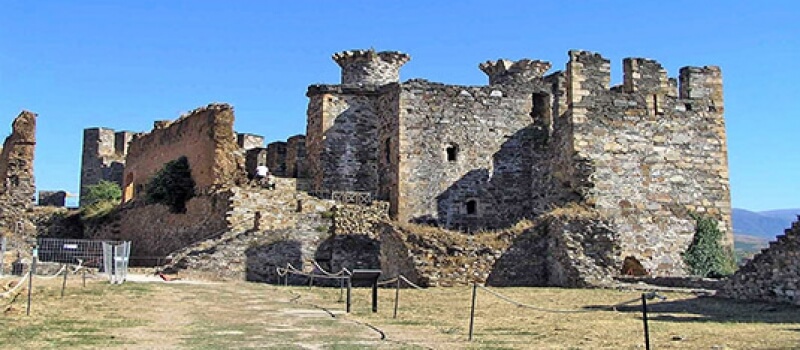
History of the Camino
The winter seasons can be hard during some stretches of the Camino de Santiago, although the landscapes of the time are fascinating, on arrival at Ponferrada we find areas full of cold snow and paths with abundant puddles that did not allow an adequate pilgrimage. All this, together with the humid cold that ruthlessly penetrates the bones, meant that the pilgrim had to look for an alternative route to access Galicia in a less hard and safer way. This is how the Winter Trail was born.
However, today, this alternative route has lost its seasonality and begins to be a fairly busy route without taking into consideration the time of year in which it is traveled. This fact is provoked by its numerous places and patrimonial treasures that it offers us, reason why many pilgrims are the ones that decide to venture in any epoch. It is especially recommended in spring, to enjoy the landscapes it gives us, and in summer, to escape the massification of the original French layout…
Learn more
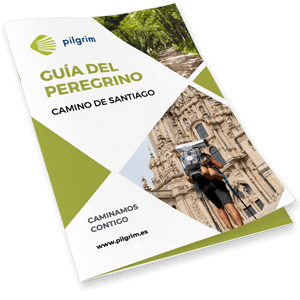
gracias por visitarnos
Descarga ¡gratis! la Guía Pilgrim
Conoce los diferentes caminos, los puntos inicio y número de etapas, señalización, tipos de alojamiento, cómo preparar tu mochila y un montón de datos curiosos
¡Revisa tu correo!
Te hemos enviado un enlace para descargar la guía. No olvides revisar la carpeta de correo no deseado si no lo tienes en la bandeja principal.

